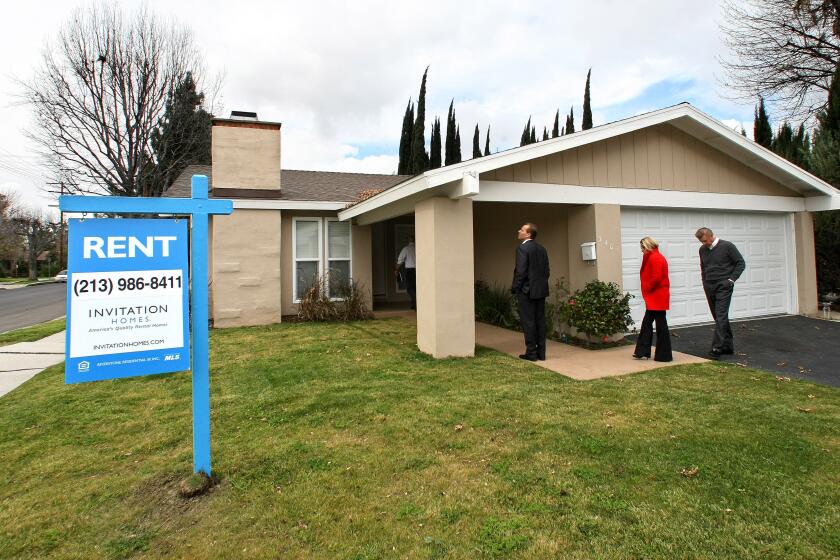Seeing the Big Picture at Tejon Ranch
Anyone who has driven Interstate 5 can envision Tejon Ranch -- the vast stretch of golden hills and live oak that separates the edge of Los Angeles from Bakersfield.
Last month, the owners of the 275,000-acre ranch announced a proposal to sell a third of their land as a conservation area, guaranteeing its permanent protection. The offer, now being considered by the state, could provide a major building block in a natural wildlife corridor between the Sierra Nevada and the mountain ranges of Southern California.
So far so good. But the Tejon Ranch Co.’s willingness to create a conservation area is only the first step in a process of planning for the future of this historic Spanish land grant. As Gov. Arnold Schwarzenegger considers the offer, and as Los Angeles and Kern counties assess the company’s emerging development plans for other parts of the ranch, they must ensure that public money and land-use approvals work together to protect the ranch’s unique biological diversity and enormous environmental importance.
Tejon Ranch sits at the crossroads of the southern Sierra Nevada, the Central Valley, the Mojave Desert, and the Tehachapi and coastal mountains, connecting four distinct plant and animal habitat types. It is renowned for the colorful wildflowers that blanket its hillsides every spring. It provides a home to the California condor and other rare or sensitive species, including the mountain silverspot butterfly, the yellow-blotched salamander, the Heermann’s kangaroo rat and the bald eagle.
There is little disagreement about the importance of the ranch, but state funds -- from voter-approved bonds in this case -- are limited. So the governor’s first task is ensuring a fair price, based on a state-approved appraisal. If Tejon Ranch Co. wants to sell something less than full title to the area -- the terms are not yet clear -- then the agreement must include ironclad, enforceable provisions that accomplish conservation goals and secure significant public access to the land. All of these negotiations must be transparent; the public must have a say in the deal before it is set in stone.
The size, location and boundaries of the proposed conservation area need to be rigorously scrutinized. Critics are concerned that the best wildlife habitat has been excluded from the proposed area. They also say that land in the proposal that has no development value should be donated by the company rather than purchased with state money.
Public access for hiking is planned, but where and how much hasn’t been clearly spelled out. Given the vagaries of the state budget process over the long term, funds for management of the area should be set aside now, as part of the deal. Most important, the company must be held to its commitment that the land conservation project will proceed independently of whether its future development plans are approved.
The governor has said he supports “smart growth,” and here’s where he can prove it. The Tejon Ranch Co. has unveiled two separate development projects for the property -- an 11,700-acre town called Centennial, with 22,000 new residential units, and an upscale, low-density resort called Tejon Mountain Village. The rest of the ranch’s future is a mystery -- there is no comprehensive land use plan for the entire property -- and neither Los Angeles County nor Kern County has taken a formal look at, much less agreed on, where urban growth should be allowed.
Few projects present more clearly the challenge of controlling sprawl, protecting habitat and providing housing and jobs. What will be done to prevent gridlock on I-5? And how can we make sure that the company creates enough jobs in its developments for the people who will live there, and that it protects open space, air and water quality?
None of these questions is resolved by the conservation area proposal, and our respect for the Tejon Ranch Co.’s leadership in making the proposal should not prevent us from insisting on solid answers before development marches over the pass.
“Make sure that when we change a place,” wrote Tony Hiss in his book “The Experience of Place,” “the change agreed upon nurtures our growth as capable and responsible people while also protecting the natural environment and developing jobs and homes enough for all.”
Though transferring 100,000 acres at Tejon Ranch from private to public ownership is the kind of change that Californians can celebrate, it could be the first shot in a major land-use battle unless Schwarzenegger and his administration ensure that the conservation is real.
More to Read
Sign up for Essential California
The most important California stories and recommendations in your inbox every morning.
You may occasionally receive promotional content from the Los Angeles Times.









